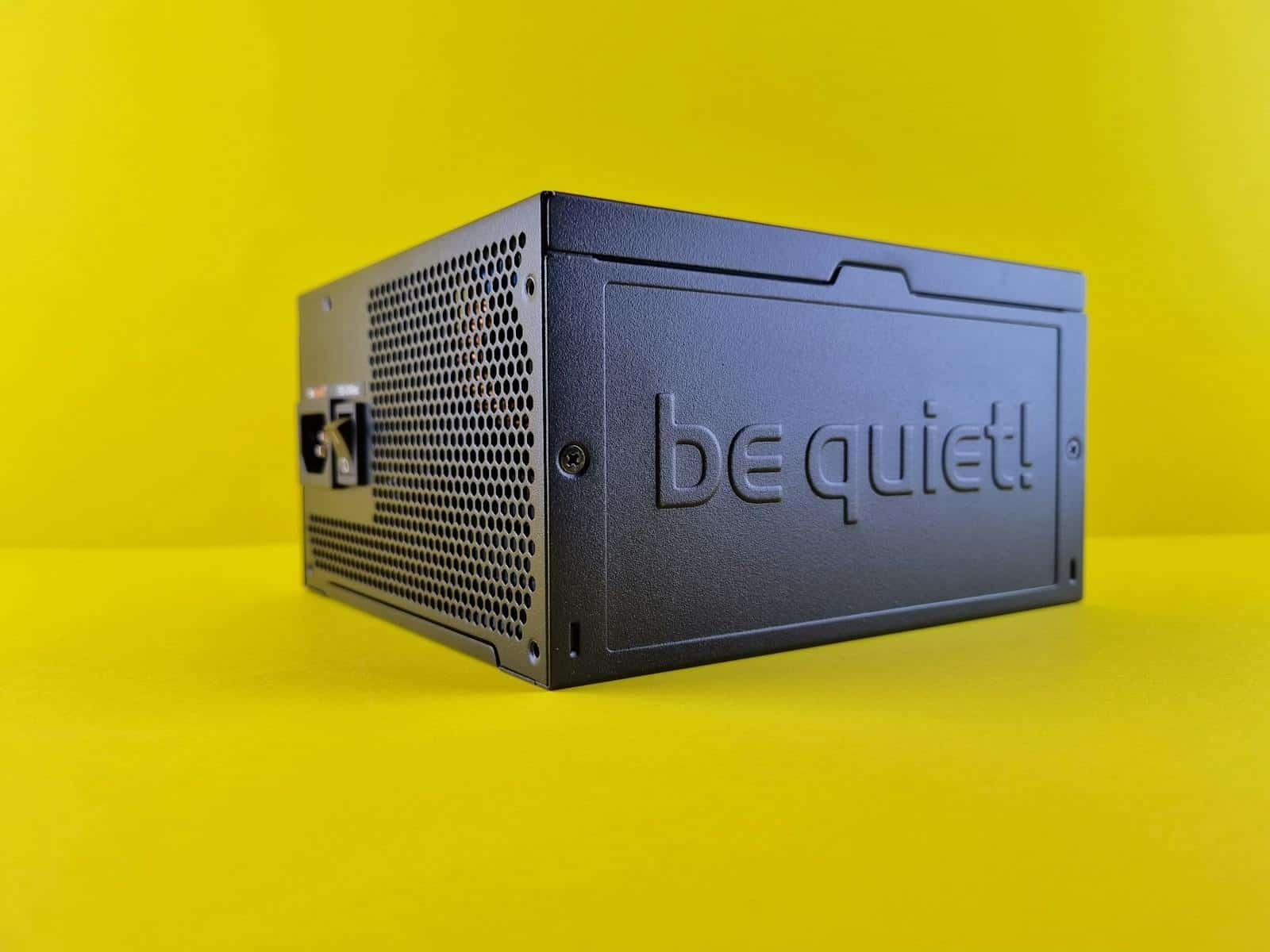Mounting a power supply unit (PSU) correctly is crucial for optimal PC performance. The fan orientation – up or down – can significantly impact cooling efficiency and overall system health. The ideal PSU fan direction depends on your PC case design and airflow configuration.
For most modern cases, positioning the PSU fan facing down is recommended. This setup allows the PSU to draw cool air directly from outside the case through bottom vents. It helps maintain lower temperatures and reduces dust accumulation inside the power supply.
However, some situations call for an upward-facing PSU fan. If your case lacks bottom ventilation or sits on a carpeted surface, orienting the fan upwards may be the better choice. This position enables the PSU to pull air from inside the case, which can be beneficial in certain airflow setups.
| PSU Fan Direction | Best For | Considerations |
|---|---|---|
| Down | Cases with bottom vents | Improved cooling, less dust |
| Up | Cases without bottom vents | Better for carpeted surfaces |
PSU Fan Orientation: Up or Down?
The orientation of your power supply unit (PSU) fan can impact its cooling efficiency and overall system airflow. Here’s a breakdown of the factors to consider:

General Rule of Thumb
- Fan facing down: If your PSU is mounted at the bottom of your case with a vent below it, it’s generally best to have the fan facing down. This allows the PSU to draw cool air from outside the case and exhaust it out the back.
- Fan facing up: If your PSU is mounted at the top of your case or there’s no vent below it, it’s usually better to have the fan facing up. This allows the PSU to draw cool air from inside the case and exhaust it out the back.
Exceptions and Considerations
- Case design: Some cases have unique airflow designs that might influence the optimal PSU orientation. Refer to your case’s manual for any specific recommendations.
- PSU intake: Some PSUs have their intake on the back rather than the bottom. In this case, the fan orientation is less critical.
- Ambient temperature: If your room is particularly hot, having the PSU fan facing down might draw in warmer air. In this situation, facing it up could be more beneficial.
- Dust accumulation: Facing the fan down might lead to more dust accumulation inside the PSU. Regularly cleaning your PC’s interior, including the PSU (if accessible), is essential regardless of fan orientation.
Why Fan Orientation Matters
- Cooling efficiency: Proper fan orientation helps the PSU draw in cooler air, improving its cooling efficiency and potentially extending its lifespan.
- System airflow: The PSU fan contributes to overall system airflow. By orienting it correctly, you can help create a more balanced airflow pattern within your case.
- Noise levels: In some cases, fan orientation can affect noise levels. Experiment with different orientations to see if it makes a difference in your system’s noise output.

Testing and Monitoring
If you’re unsure about the best orientation for your PSU fan, you can experiment and monitor your system’s temperatures:
- Install the PSU: Install the PSU in your case with the fan facing either up or down.
- Monitor temperatures: Use a hardware monitoring program (e.g., HWMonitor, SpeedFan) to track your CPU and GPU temperatures during normal use and under load.
- Try the other orientation: Change the PSU fan orientation and monitor the temperatures again.
- Compare results: Compare the temperature readings to see which orientation results in lower temperatures for your system.
By carefully considering these factors and testing different orientations, you can optimize your PSU fan setup for better cooling and overall system performance.
PSU Fan Orientation Basics
Proper PSU fan orientation is crucial for optimal airflow and system cooling. The direction of the fan affects how air moves through your PC case and impacts overall thermal performance.
Understanding PSU and Case Fans
PSU fans work alongside case fans to manage airflow. Case fans typically include intake fans at the front and exhaust fans at the rear or top. The PSU fan can act as an additional intake or exhaust depending on its orientation.
PSU fan positioning affects air circulation within the case. When the fan faces down, it draws cool air from outside through a vent in the case bottom. This setup isolates the PSU’s airflow from the rest of the system.
With the fan facing up, it pulls air from inside the case. This can help remove hot air but may lead to the PSU taking in warmer air.
PSU Fan Up vs. Down: Pros and Cons
| Orientation | Pros | Cons |
|---|---|---|
| Fan Up | Helps exhaust case air | PSU may intake warmer air |
| Fan Down | PSU gets cooler outside air | Doesn’t assist case airflow |
Fan-down orientation is often recommended for cases with bottom vents and dust filters. It provides cooler air to the PSU and keeps its heat separate from other components.
Fan-up configuration can work well in cases with good airflow. It may help remove hot air from the GPU area. However, this setup might lead to higher PSU temperatures.
The choice depends on your case design and overall cooling setup. Cases with PSU shrouds usually work best with fan-down orientation. Open layouts might benefit from fan-up in some situations.
Installation and Mounting Considerations
Proper PSU installation impacts system cooling and longevity. The mounting location and fan orientation are key factors to consider when setting up a power supply unit.
Bottom Mount vs. Top Mount PSU
Modern PC cases typically feature bottom-mounted PSU designs. This layout improves stability and cooling efficiency. Bottom mounting allows the PSU to draw cool air from outside the case through dedicated vents.
Top-mounted PSUs were common in older cases. They often drew warm air from inside the case, reducing cooling effectiveness. Some compact or specialized cases still use top mounts.
| PSU Mount | Advantages | Disadvantages |
|---|---|---|
| Bottom | Better cooling, stability | May be affected by carpet |
| Top | Easier cable management | Less efficient cooling |
Factors Influencing Fan Orientation
PSU fan orientation depends on case design and environmental factors. For bottom-mounted PSUs, fan-down installation is often preferred. This setup allows the PSU to draw cool air from outside the case.
Fan-up orientation may be necessary if the case lacks bottom vents or dust filters. It’s also suitable for systems placed on carpet where bottom airflow would be restricted.
PSU shrouds in some cases can affect airflow. They may necessitate specific fan orientations for optimal performance. Builders should check case specifications and PSU requirements to determine the best setup for their system.
Thermal Performance and Airflow Optimization
The orientation of a PSU fan impacts overall system cooling. Proper positioning enhances airflow and reduces component temperatures.
Maximizing Cooling Performance
PSU fan orientation affects cooling efficiency. Placing the fan downward often yields better results. This setup draws cool air from outside the case through a bottom vent.
It expels warm air directly out the back. This method prevents the PSU from recycling hot air inside the case. It’s especially effective in cases with dedicated PSU intake filters.
Fan-up configurations can work in certain scenarios. They may be suitable for cases with limited bottom ventilation. However, this orientation can increase internal case temperatures.
| PSU Fan Orientation | Pros | Cons |
|---|---|---|
| Down | Better cooling, Less dust | Requires bottom ventilation |
| Up | Works in all cases | May increase internal temps |
Effects of PSU Fan Position on PC Components
PSU fan orientation influences other PC parts. A downward-facing fan helps maintain lower CPU and GPU temperatures. It achieves this by not competing for cool air inside the case.
This setup complements case fans’ airflow patterns. It allows them to focus on cooling critical components like the CPU and GPU. Cases with good airflow benefit most from this arrangement.
An upward-facing PSU fan can disrupt internal airflow. It may create turbulence and reduce cooling efficiency for other components. This is particularly noticeable in systems with high-power GPUs or overclocked CPUs.
Proper PSU placement helps maintain optimal operating temperatures. It contributes to the longevity and stability of all PC components.
Maintenance and Longevity of PSU
Proper care of your power supply unit (PSU) fan can extend its life and improve system performance. Regular cleaning and smart positioning help prevent overheating and damage.
Reducing Dust and Damage Risks
Positioning the PSU fan downwards often provides better cooling. This setup draws cool air from outside the case through a dust filter. Dust filters trap particles before they enter the PSU, reducing buildup on internal components.
For optimal protection:
- Clean dust filters monthly
- Use compressed air to remove dust from PSU vents
- Check for debris in fan blades quarterly
Cases with bottom ventilation work best for downward-facing PSU fans. This design creates a separate airflow path for the PSU, isolating it from hot internal case air.
Best Practices for PSU Fan Maintenance
Regular maintenance keeps PSU fans running smoothly. A clean fan operates more efficiently and quietly, prolonging PSU lifespan.
Maintenance tips:
- Power off and unplug the system before cleaning
- Use a soft brush to remove loose dust
- Apply isopropyl alcohol to stubborn dirt
- Allow components to dry fully before reconnecting
| Maintenance Task | Frequency | Tools Needed |
|---|---|---|
| Dust filter cleaning | Monthly | Vacuum, soft cloth |
| PSU vent cleaning | Quarterly | Compressed air |
| Fan blade inspection | Quarterly | Flashlight |
| Deep clean | Annually | Isopropyl alcohol, brush |
For gaming PCs or systems under heavy load, increase cleaning frequency. High-performance setups generate more heat and dust, requiring extra attention to maintain optimal PSU function.
Frequently Asked Questions
PSU fan orientation plays a crucial role in cooling efficiency and overall system performance. The correct placement depends on several factors including case design and airflow patterns.
What is the recommended orientation for a PSU fan in a computer case?
The recommended orientation often depends on the case design. For cases with bottom ventilation and dust filters, positioning the PSU fan downward is typically ideal. This allows the power supply to draw cool air directly from outside the case.
In cases without bottom ventilation, an upward-facing fan may be more suitable. This configuration helps the PSU utilize the case’s internal airflow for cooling.
Should the PSU fan face upwards or downwards for optimal cooling performance?
Downward-facing PSU fans generally offer better cooling performance. This orientation allows the power supply to draw cooler air from outside the case, promoting more efficient heat dissipation.
Upward-facing fans can still be effective in certain setups. They may contribute to overall case airflow by pulling warm air from other components.
How does the placement of a power supply affect its cooling efficiency and noise levels?
Proper PSU placement significantly impacts cooling efficiency and noise output. A downward-facing fan in a well-ventilated case often results in quieter operation due to lower fan speeds.
Upward-facing configurations may lead to slightly higher noise levels. The PSU fan might need to work harder to cool components using warmer air from inside the case.
Can the orientation of a PSU fan impact system temperatures or airflow?
PSU fan orientation can indeed affect system temperatures and airflow patterns. A downward-facing fan helps isolate the PSU’s thermal output from other components.
An upward-facing fan may contribute to overall case airflow. This can be beneficial in some setups but might also introduce warmer air to other components.
Are there specific scenarios where a PSU fan should be positioned differently?
In cases with limited bottom ventilation, an upward-facing PSU fan may be necessary. This ensures adequate airflow for the power supply.
For systems in dusty environments, a downward-facing fan with a dust filter is often preferable. This setup helps prevent dust accumulation inside the PSU.
What considerations should be made for PSU fan orientation in different case designs?
Case design plays a crucial role in determining optimal PSU fan orientation. Cases with bottom ventilation and dust filters are designed for downward-facing PSU fans.
In compact cases or those with non-standard layouts, careful consideration of airflow patterns is essential. The goal is to ensure the PSU receives adequate cooling without negatively impacting other components.
| Case Feature | Recommended PSU Fan Orientation |
|---|---|
| Bottom ventilation with dust filter | Downward-facing |
| No bottom ventilation | Upward-facing |
| High airflow design | Either (case-dependent) |
| Compact form factor | Upward-facing (usually) |
| Dusty environment | Downward-facing with filter |





